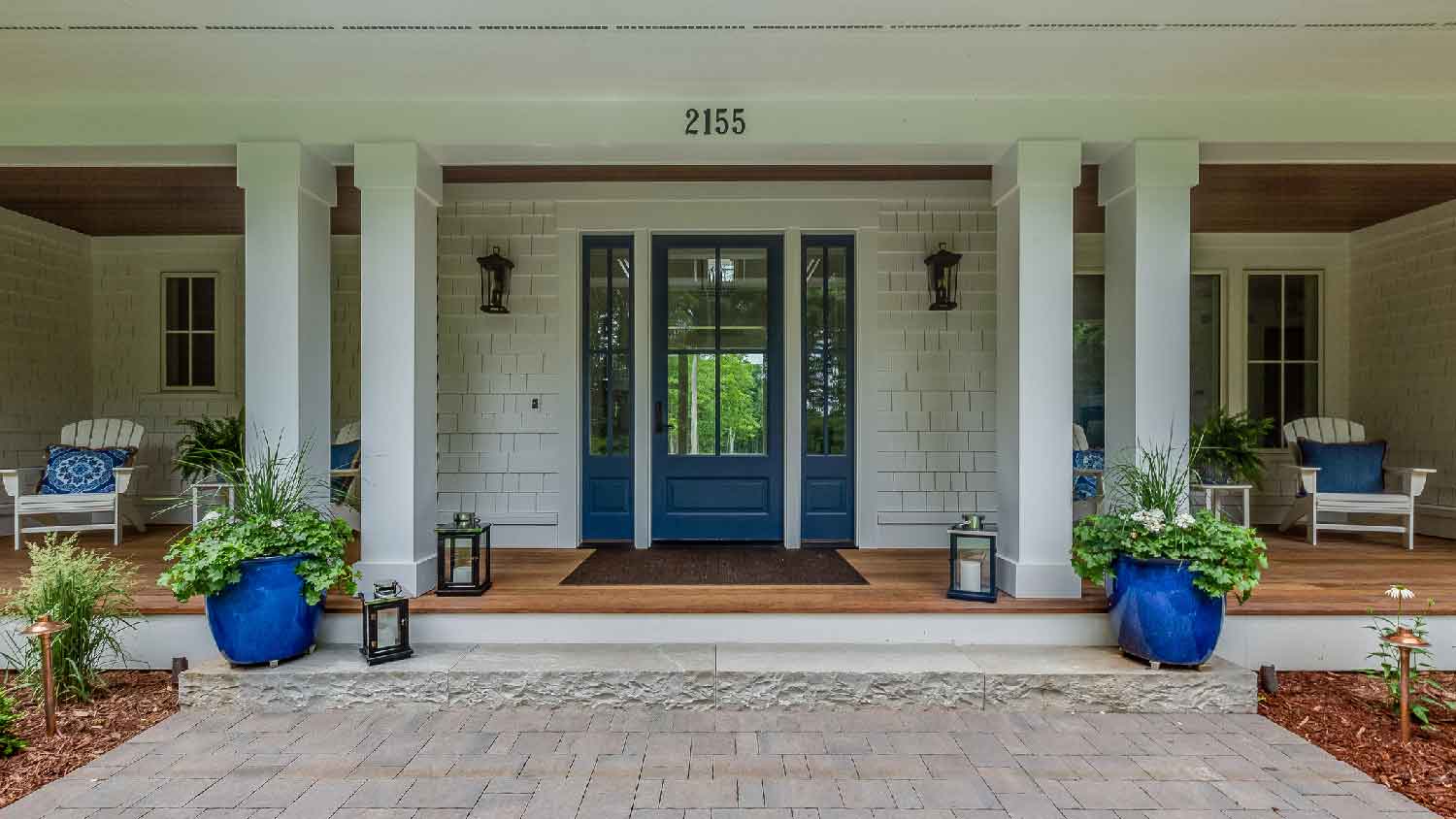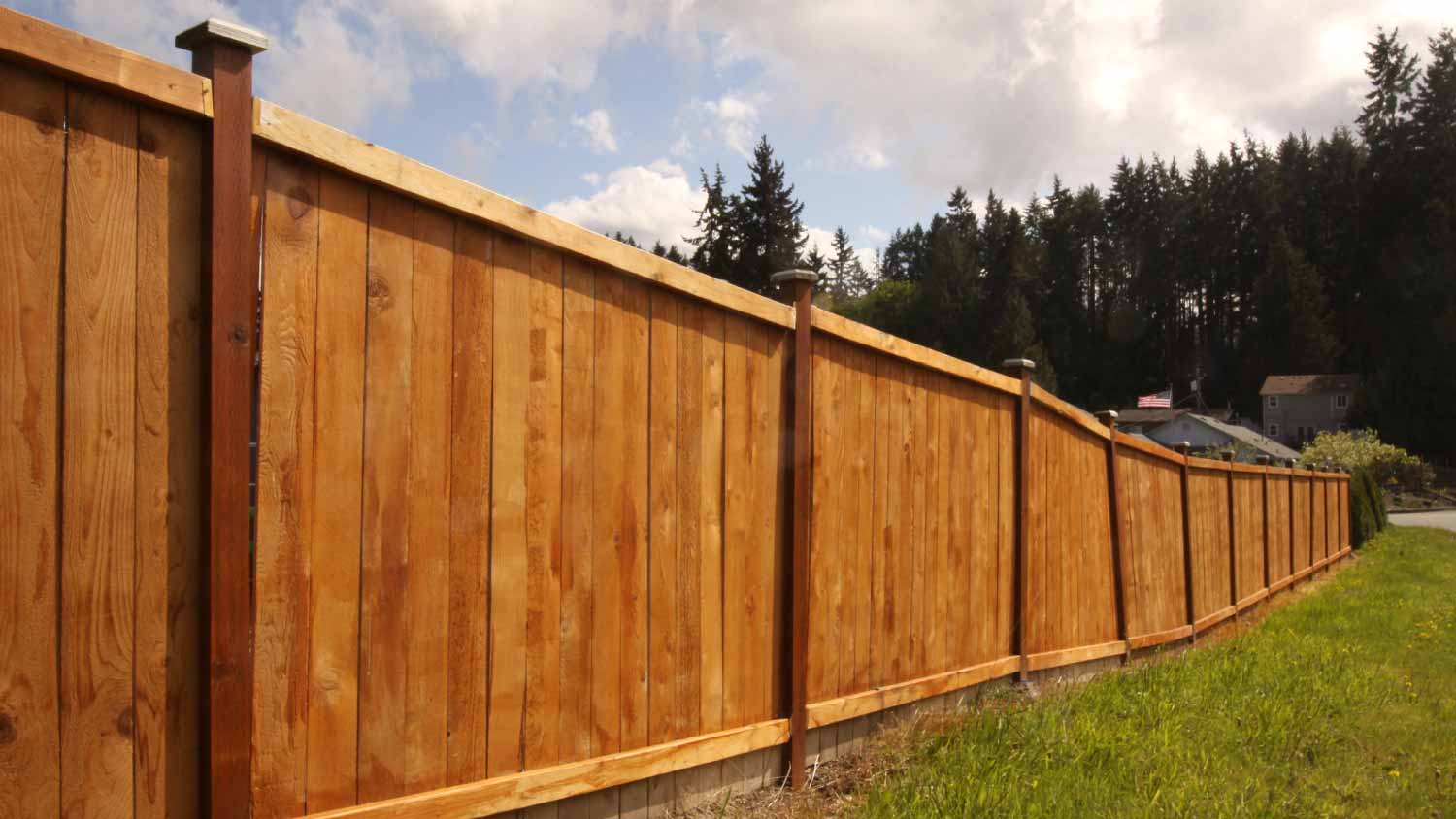
The cost to paint a pool deck depends on the dimensions and material, the type of paint, and whether you DIY. Read on to help determine a project budget.
These options stand up to the elements and look good doing it


If you’re having a hard time picking the right exterior door paint, hire an exterior painting pro to help narrow down your options.
Latex paint is affordable and durable but not good for wood or metal doors.
Oil-based paints are expensive but last far longer than most other options.
Opt for a high-gloss or satin finish over matte to hide scuff marks and fingerprints.
If the windows are the eyes of a home, then the front door is its heart. It’ll be the last thing you see on your way out and the first to welcome you back, which is why it’s so important that it be in tip-top shape. Choosing the best exterior door paint will ensure your entrance shines for years to come, offering defense from inclement weather and boosting curb appeal.
There are many types of exterior paint, but only a handful are well-suited to the demands of various door materials, like metal and wood. Use the guide below to ensure you find an option that provides protection and is visually appealing, whether it’s for your main, back, or garage door.
Picking the right paint type for an exterior door will come down to a handful of factors: the door’s material, like wood, metal, or fiberglass, your climate, and when you plan on painting. Here are the best formulas for exterior door paint, their pros and cons, and guidance on which you should pick based on your specific needs.
Latex paint is a favorite for interior projects, but it’s also an excellent option for the outside of your home. This water-based pick is more affordable than many acrylic varieties and can lower the overall cost to paint a door. Like acrylic, latex produces few to no volatile organic compounds (VOCs), which can harm both the applicant and the surrounding environment. It also has a relatively speedy drying time, making it a great pick for year-round painting.
Additionally, it expands and contracts with high and low temperatures, making it one of the best paints for fiberglass and vinyl—two materials that are similarly sensitive to temperatures. However, because it’s water-based, it may require a primer coat to adhere well to certain surfaces. Even then, it can appear streaky on metal and may soak into and warp wood, and frequent rain and humidity may cause it to deteriorate faster than other paints.
| Pros | Cons |
|---|---|
| Environmentally friendly | Low durability in humid and rainy weather |
| Inexpensive | Needs primer |
| Easy application | Not ideal for wood or metal |

Oil-based paints are not as widely used as other varieties because they produce a high amount of VOCs, which can be harmful during application if proper protective measures aren’t taken—like wearing a face mask and gloves in a well-ventilated space—and hazardous to the environment if run-off occurs. If you want the benefits of oil paint without the associated risks, hire an exterior painter near you to do the job safely.
You might want to consider this option for exterior doors because of its durability. Though oil paint can take up to 24 hours or longer to cure completely, you won’t have to apply another coat for up to 15 years. Plus, it’ll adhere well to almost any surface and won’t look patchy or uneven. Keep in mind, though, that this longevity comes at an increased price.
| Pros | Cons |
|---|---|
| High durability | Produces hazardous fumes |
| Weather resistant | Long dry time |
| No prep required | Costly |
Acrylic paint is another water-based paint that adheres well to temperature-sensitive materials like vinyl and fiberglass. It also isn’t flammable and doesn’t produce many VOCs because of its water-based composition.
It dries the fastest of all the options on this list but doesn’t always produce consistent results. For example, the speedy dry time makes brush marks hard to avoid. Plus, it performs similarly to latex but at a slightly higher cost. It may warp wood and appear streaky on metal. Unless you’re working with a fiberglass or vinyl door—or debating between paint and stain for concrete or stucco siding, on which it performs exceptionally well—you might want to consider another option in this list.
| Pros | Cons |
|---|---|
| Speedy dry time | More expensive than similarly performing alternatives |
| Low VOCs | Low durability |
| Easy application | Not ideal for certain surfaces |
Believe it or not, many so-called oil paints are actually alkyd paints upon closer inspection. The biggest difference between the two is that alkyd paint uses a base of resin rather than oil, which makes it similarly durable and great on all surfaces, yet as easy to apply and quick drying as acrylic or other water-based paints. In that way, it’s the best of both worlds. But, like oil paint, it’s a bit pricier than some alternatives and produces a high amount of VOCs. So, while it’s resistant to weather and great for outdoor use, avoid applying it without protection or in poorly ventilated spaces.
| Pros | Cons |
|---|---|
| Easy application | Produces hazardous fumes |
| High durability | More expensive than alternatives |
| Weather resistant | More likely to splatter during application |
Epoxy paint is water-based but contains a small amount of epoxy resin. This addition makes it more durable than similarly formulated alternatives like latex and acrylic and a better fit for climates with high rain or snowfall. This added benefit will cost a bit extra, but the investment will pay for itself in the form of an extended life span. If applied properly, it could be up to 20 years before you need to apply another coat of this paint type. However, options are limited in this formula, so you might struggle to find a color of epoxy paint that fits your aesthetic.
| Pros | Cons |
|---|---|
| High durability | Difficult application |
| Weather resistant | More expensive than alternatives |
| Low VOCs | Minimal color options |

Finish is as important as your paint color for an exterior door. Paints of all types can appear a certain way when dry, whether that’s glossy, matte, or somewhere in between. While your preference is important, a few key factors will help you pick the right finish for your home.
Glossy finishes are especially resistant to scratches, scuffs, and stains, making them ideal for exterior painting. They’re also easy to clean and great for highlighting decorative elements like front doors, window sills, and trim. One major downside to this option is that it won’t mask faults or pre-existing damage, so you might want to pick another if that’s your aim.
While not as resistant to weather phenomena or any damages they may incur, matte finishes do a good job of masking scratches or dents on the surface. And if you’re not a fan of gloss or sheen, a finish like this is a great way to mute such characteristics on a metal exterior feature, like a garage door or gate. That said, matte finish is most prone to showing off fingerprints and scuffs, which are bound to occur on a high-traffic spot like your front door.
Can’t decide between matte and glossy? Try satin. This finish is a good compromise that provides the same protective qualities as a glossy or semi-gloss paint while camouflaging any scratches or stains you might be trying to hide.
From average costs to expert advice, get all the answers you need to get your job done.

The cost to paint a pool deck depends on the dimensions and material, the type of paint, and whether you DIY. Read on to help determine a project budget.

The cost to sandblast your home’s exterior or another surface on your property depends on the method and the materials you use. Learn more with this guide.

Painting a garage door is one of the most impactful projects you can undertake with a smaller budget. Learn what makes up the total cost, as well as tips on how you can save.

Paint your flexible, charming barndominium with one of these stunning exterior colors to give it vibrancy and personality.

Planning to stain a fence? You’re likely wondering: How much stain do I need for my fence? Figure it out with our fence stain calculator.

Increase your curb appeal by taking your chain link fence from dull to bold with fresh paint. Here’s how to paint a chain link fence to keep it looking great.